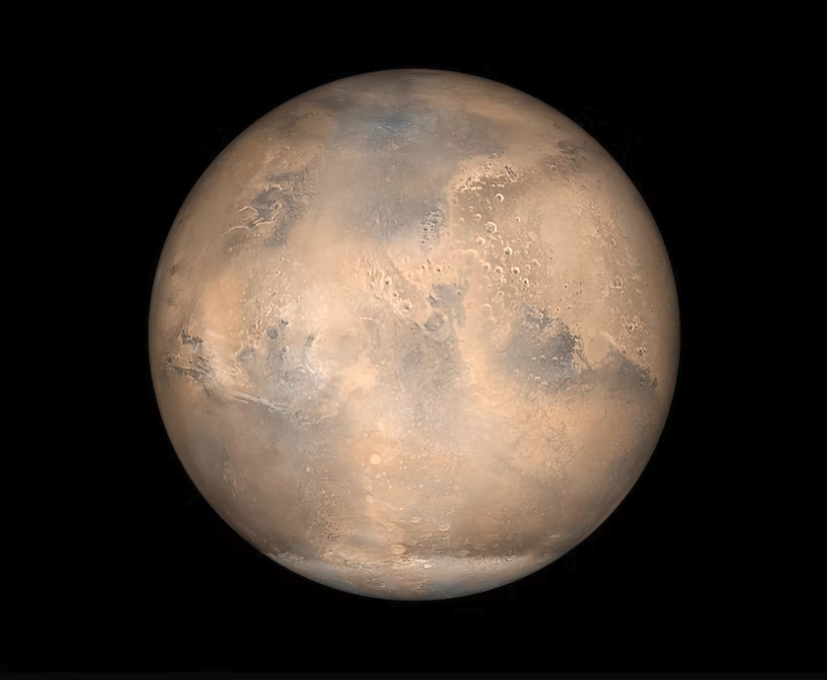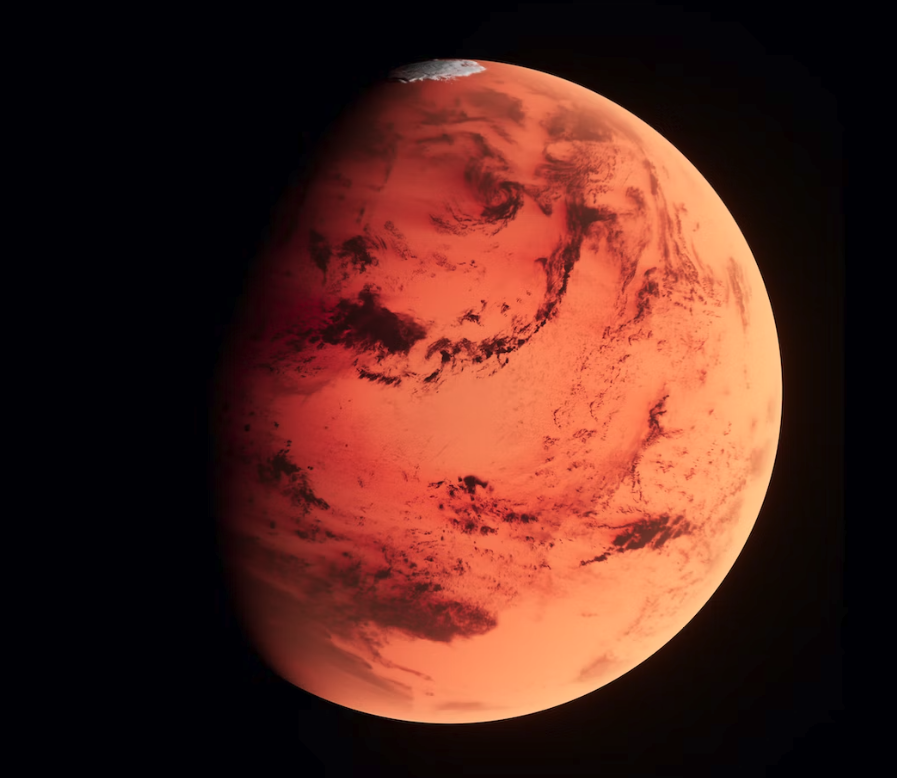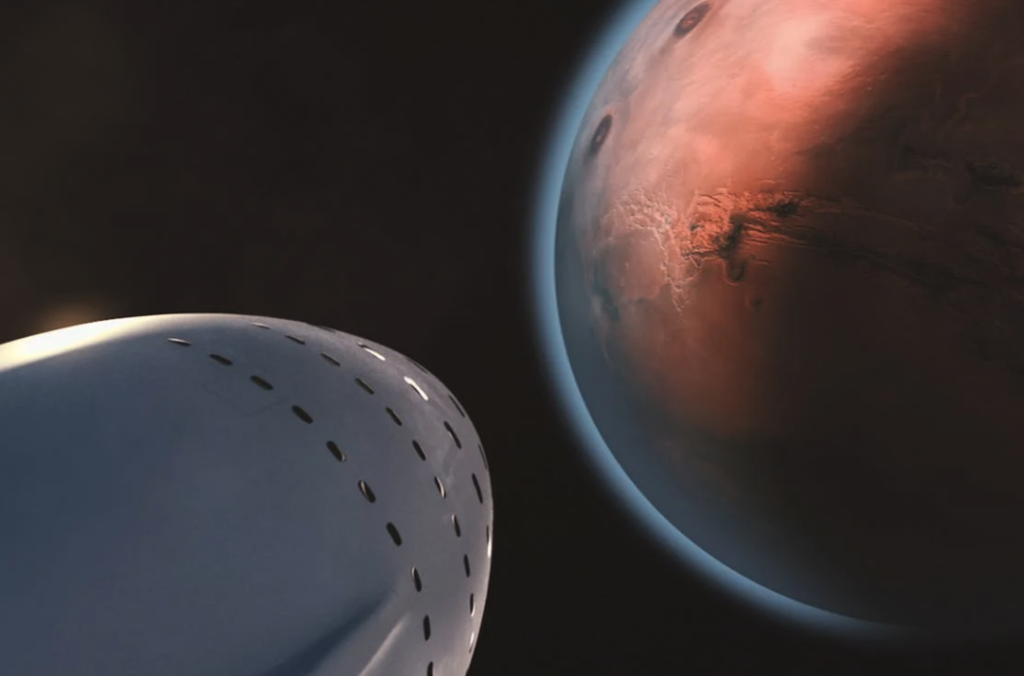How Many Moons Does Mars Have?
Table of Contents
The Two Moons of Mars
The fourth planet of our solar system has two small moons that orbit around it. While the answer to how many moons does Mars have may be news to some people, they were discovered as far back as 1877, and even today there is still debate on where exactly they originated from. Some astronomers believe that these moons were once part of the nearby asteroid belt and Mars’ gravitational pull brought them closer, while other astronomers believe that these moons were debris that stuck near Mars while it was first forming.
Mars is named after the Roman God of war, so it only makes sense that its two satellites are named Fear and Terror. In Greek mythos, these two were brothers who accompanied Ares, just as the moons accompany Mars.

What Are the Moons Like?
Phobos, the innermost moon and the larger of the two, orbits extremely close to Mars. It orbits closer to Mars than any other known moon in the Solar System at about 3,700 kilometers away from Mars. It travels at such a fast velocity that it orbits Mars three times each day. It’s also an extremely small moon, approximately 22.5 kilometers wide. It’s even small enough that the force of gravity has not yet been able to pull it into a spherical shape, leaving it somewhat oblong in appearance.
Deimos, the outermost moon and the smaller of the two, orbits a fair distance away from Mars. It is about half the size of the other moon, coming in at just over 12 kilometers. It orbits Mars at a much further distance at almost 20,000 kilometers away. Because of just how much smaller and further away it is from the other moon, it can be harder to see if you don’t know exactly where and what to look for. Its surface is notably smoother than the other’, meaning that it hasn’t been hit by space debris as much. Much like the other moon, it isn’t spherical either. Its shape is almost closer to a square than oblong.
How Many Moons Does Mars Have and What Are the Moons Made of?
The composition of a moon can tell astronomers a lot about the history and the origins of the moon. Both of these moons are considered “C-Type asteroids”, which is the most common type of composition. The majority of asteroids that are found in the Solar System fall under this typing, but what does it really mean?
The “C” in C-Type stands for carbon, one of the most abundant elements in the universe. Asteroids of this typing, as well these moons, have a dark surface thanks to the carbon-heavy rocks covering the surface. They also have an internal structure that is almost entirely solid, which would indicate that at some point in their existence that they encountered extremely hot temperatures that brought them to a molten point. Other bodies indicate that they are a collection of pieces that have been melded together by the force of gravity, brought together by a collision. These are both common types found in C-Type asteroids.
As for how this relates to the moons, let’s take a closer look at the smaller details of them.

A Crater Known as Stickney
Located on the larger moon, you will be able to find the largest known crater any moon. This crater has been given the name of Stickney, and it gives quite a few insights into the life that this moon has lived. The crater itself takes up almost one-third of the entire size of the moon, and despite the moon’s relatively small size, this makes it one the largest impact crater that has been discovered. There is another, smaller crater within this one, known as Limtoc.
The impact was forceful enough that it knocked the surrounding material on the moon loose, leaving noticeable grooves that can still be seen through telescopes today. Due to its wobbling, unsteady orbit, the loose material can sometimes cause the slopes to shift, which is one of the many unique features that this moon has. Looking into the crater, it becomes clear that although the moon was close to becoming destroyed, the actual composition of the moon is solid material.
Although the other moon does not have such a distinguishing feature, it does have a few impact craters on it, the smallest of which measure 2.5 kilometers. These craters are not large enough to get an in-depth look at the material the way that Stickney allows for, but it is believed that the composition of the moon is the same. This does lend credence to the theories that both of these moons may have come from the nearby asteroid belt, given that they are made from the same materials, and they do not seem to be of the same material that Mars consists of.

How Were These Moons Discovered?
When asking ourselves how many moons does Mars have, it is also important to consider how the moons were discovered. It’s always interesting to see how planetary satellites are discovered, especially when they happen well before modern telescopes and exploratory equipment. While credit for discovering these moons goes to the American astronomer Asaph Hall in 1877, it is believed that there was speculation about the existence of these moons dating back as far as Galileo, with there being tenuous references to them in Jonathan Swift’s classic Gulliver’s Travels.
Hall’s working theory was that the inner planets of the Solar System had no moons, Earth had one, and Jupiter had four, so it was a perfectly reasonable assumption that the planet standing between Earth and Jupiter must have at least two moons. He had been growing frustrated at the time because he felt that he was close to his discovery, but weather had been bad, hindering his ability to see the moons. His wife, Angeline Hall, kept him focused and helped him stay on track.
Thanks to his wife’s encouragement, on August 12, 1877, he discovered the first moon and in less than a week he discovered the second moon. He would then write that he would have abandoned the search if it weren’t for his wife’s encouragement. It wouldn’t be until the naming of the Stickney crater in 1973 that Angeline was credited for keeping Hall on track.
The answer to our question how many moons does mars have, has been answered! Mars has two moons, both named after the sons of Ares who followed him around in Greek mythos, just as the moons follow Mars throughout the sky. While some planets, like Saturn, have dozens of moons, both of Mars’ moons, discovered by Asaph Hall in 1877, have similar composition as asteroids, which lends to the belief that they may have been drawn into Mars’ orbit from the nearby asteroid belt.
These moons are small, both of them being smaller than 23 kilometers in diameter, and hard to see unless you have the right equipment. The larger one orbits Mars extremely close and at a high velocity while the smaller one orbits Mars much farther away. The larger moon has a crater that takes up over one third of its surface area, which is one of its most defining characteristics. These are the features that make up Mars’ two moons.
